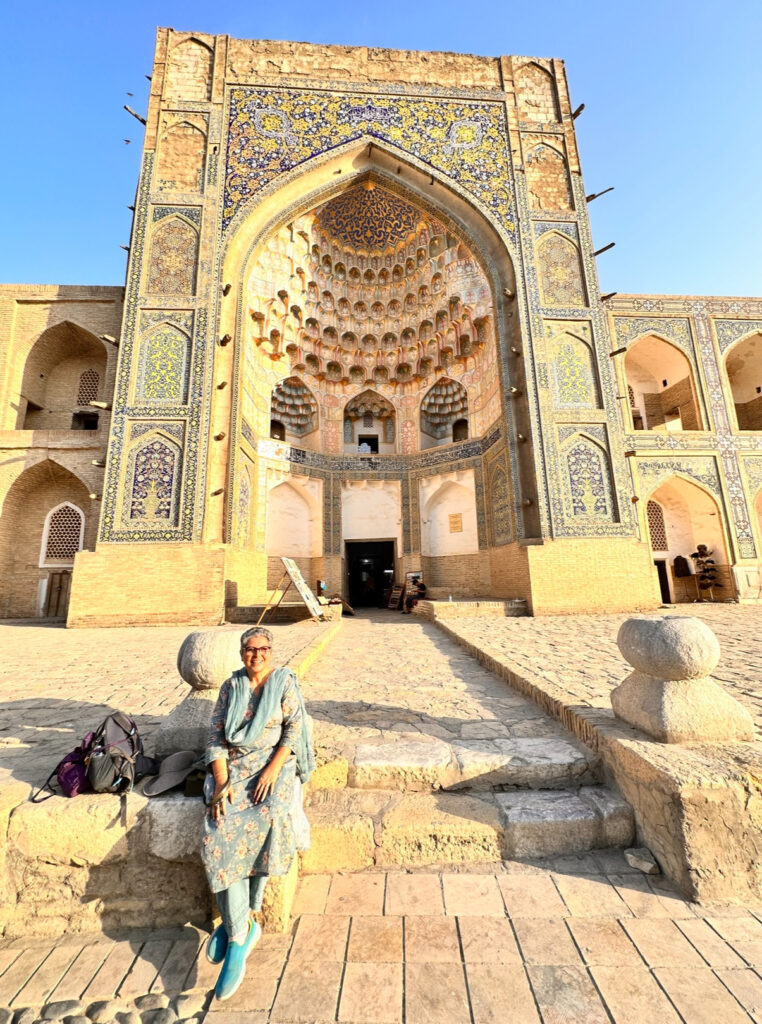
Today when we think of educational institutes we think of Oxford and Cambridge, Harvard and Yale.
But from the beginning of the 15th century till Soviet the 19th century there was a country that was famous for it’s madrasah: Uzbekistan.
The Uzbek madrasahs were famous for teaching of science as astronomy, mathematics, medicine, chemistry, humanities such as history, philosophy, linguistics, literature, and arts and crafts such as sculpture, weaving, pottery, glass making, etc.
Kings and rich nobles invested in education and built madrasah to promote learning and perpetuate their name.
It boasted of some of the best educational institutes in the medieval and early modern eras. These madrasah taught religious and secular subjects. While religion was taught in the junior classes, it was law, logic, mathematics, geography, philosophy and astronomy that were famous.
Uzbekistan produced famous astronomers like Ulugh Beg whose books were translated and used widely, Ibn Sina famous in the west as Avicenna called teh father of medicine, Alberuni who was an astronomer, mathematician and philosopher, studied physics and natural sciences. He is also teh first to obtain a simple formula to measure the earth’s radius.
Then we have the man who made modern computers possible – Al-Khwārizmī is famous for his mathematical works, which introduced Hindu-Arabic numerals and algebra to European mathematicians. In fact, the words algorithm and algebra come from his name and the title of one of his book Al-Jabr, respectively.
There are many and you can read up on them here https://www.academy.uz/en/page/ozbekistonda-ilm-fan-taraqqiyoti
To come back to Abdul Aziz madrasah. It was built in 1652 by Abdul Aziz.
The fist thing that strikes the visitor are the huge pishtaq and surrounding aiwans.
Once that catches your eye your glance goes upto the ogival arch, which doesn’t cease to enthrall you at each level as it gets smaller and more elegant till you reach the tip.
The rest of the madrasah is not so well decorated as it was left incomplete. Abdul Aziz was away from Bukhara when an Uprising began there. Though it was suppressed, this madrasah couldn’t be completed.
On the sides of the darwaza are beautiful tiles with floral designs.
Today the madrasahs ahve become centres of tourist shops and commerce
Why then did these decline?
The decline of Uzbek madrasahs (Islamic educational institutions) can be attributed to a combination of historical, political, social, and economic factors. It’s important to note that the decline of madrasahs is not unique to Uzbekistan and has been observed in various parts of the Islamic world. Here are some key factors that contributed to the decline of madrasahs in Uzbekistan:
- Soviet Era Suppression: During the Soviet era, which lasted from the early 20th century until the early 1990s, religious institutions including madrasahs were heavily suppressed. The communist government sought to control and secularize education, discouraging religious education and promoting atheism. Many madrasahs were closed, and religious activities were restricted. This significantly weakened the tradition of Islamic education.
- Secularization and Modernization: After gaining independence from the Soviet Union in 1991, many Central Asian countries, including Uzbekistan, aimed to modernize and secularize their societies. This often involved downplaying religious influences and focusing on secular education. And since the madrasah had been branded as religious institutions because of their name they faced competition from modern schools and universities.
- Economic Challenges: Madrasahs often rely on donations from the community or religious endowments (waqf) for financial support. Economic difficulties in the region have affected the ability of these institutions to sustain themselves. Modern educational institutions with more funding and resources have become more attractive to students and families.
- Lack of Relevance: The curriculum of traditional madrasahs can sometimes be seen as outdated and not aligned with the needs of a modern society. This has led to a perception that madrasah education might not adequately prepare students for the challenges of the contemporary world, including job opportunities.

